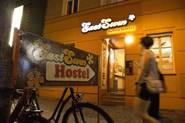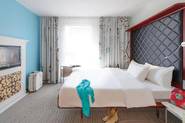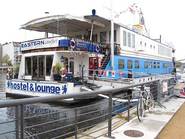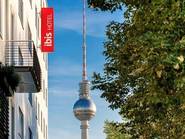Berlin is a massive city, so it's noteworthy that one of these day trip suggestions (Pfaueninsel) is actually within the city limits, while another (Potsdam) is just beyond them. We've also included our favorite Spreewald lakeside town, a hamlet a good half hour beyond the German train network where you will probably hear Sorbian spoken in the streets in addition to German.
Berlin Day Trips

Fairytale Wooded Island: Pfaueninsel
Highlights: breathtaking views; crazy architecture; hillside strolls
Duration: four to eight hours
Exertion level: moderate to high
Accessible by: U-Bahn, bus, ferry
In the southeastern corner of the Berlin metropolitan region is the fairytale wooded island of Pfaueninsel, or Peacock Island. Yes, we said "fairytale." Where else can you find a palace, the remnants of a royal menagerie that today includes peacocks and parrots and a re-creation of a Roman temple—all on a tiny, wooded island?
The Pfaueninsel's paths, landscaped by Peter Joseph Lenné, wind through the island's gardens, allowing easy tours of the tiny. Many visitors spend all their time on the Pfaueninsel strolling these paths, taking in all the unexpected attractions.
During warm weather, however, the Pfaueninsel becomes a swimming and sunning idyll. Surrounded by trees, this is an ideal place to spend a lazy weekend afternoon.
To get to the Pfaueninsel, take the U-Bahn to Waldsee and connect there by bus to a ferry pier. The ferry costs €3, and entrance to the island runs €3.
For more information about Pfaueninsel, take a look at the official Visit Berlin page on the island. Berlin's Prussian Castles and Gardens Foundation (SPSG) site also contains some Pfaueninsel information.
Grand Palace: Potsdam
Highlights: parks; palaces; architectural variety
Duration: three to six hours
Exertion level: low
Accessible by: commuter train, bus
Potsdam surprises visitors with a wide range of architectural styles. With UNESCO World Heritage status under its belt, the city boasts several palaces and gorgeous royal parks that attract huge numbers of visitors.
But Potsdam is saturated with architectural interest beyond the astounding Sanssouci Castle. A tiny cluster of Russian houses in Alexandrowka (dating back to the 1820s) provides one example; the trendy Dutch Quarter, built between 1735 and 1745, with its baroque Low Country buildings, is another.
What makes Potsdam a perfect day trip destination, however, is the fact that these historical treasures blend in so well with the otherwise modern, even funky, feel of the city. The Schiffbauergasse complex is a great example of "funky" Potsdam. It's a multi-entertainment center housed in a renovated gas works facility. Check out the German-language Schiffbauer Website.
And then there's the delightful physical environment. Potsdam is basically surrounded by water, making it one of eastern Germany's more physically attractive cities.
For more information about Potsdam, take a look at the city's tourism site.
Sorbian Spreewald: Lehde
Highlights: quiet lake town; cultural interest; rural escape
Duration: five to eight hours
Exertion level: low to moderate
Accessible by: train, foot

Boats and houses along the river in Lehde.
Photo by Alex Robertson Textor.
The Spreewald is one of eastern Germany's most naturally beautiful forested regions and the traditional home of the Sorbs. Sorbs speak a Slavic language and have a history of resisting German cultural dominance. In popular German culture, the Sorbs are known for their colorful costumes and lively customs. Today, towns in the region with significant Sorbian populations are characterized by bilingual street signs.
Lehde, one gem of a Spreewald village, is also known by its Sorbian name, Ledy. It's a very small place which nonetheless feels like a major tourist hub in high season. This area of the Spreewald is called "green Venice" in local tourist literature.
What makes Lehde so appealing is its quiet, leisurely pace. A pleasant walk from the nearest train station at Lübbenau, the village sees far fewer tourists than other nearby towns do. Another draw is Lehde's Freilandmuseum (website in German only), which highlights local history, and includes a significant exhibition on Sorbian culture.
To get to Lehde, you need to first journey to Lübbenau by train. From Berlin, the journey takes about 90 minutes. From Lübbenau, Lehde is a short 30 to 45 minute stroll. This walk very well may be the high point of your visit to Lehde. The short amble from the train station into Lübbenau itself is pleasant enough, but once you follow the signs out of the quiet village of Lübbenau and into the gorgeous, verdant Spreewald you may very well feel that you're merging with nature.
Alternately, you might join the legions of German tourists during high season and board a traditional punt to travel through canals from Lübbenau to Lehde. Many punts serve drinks and snacks during their excursions.
For more information about Lehde, check out this Lehde tourism site (in German only).













